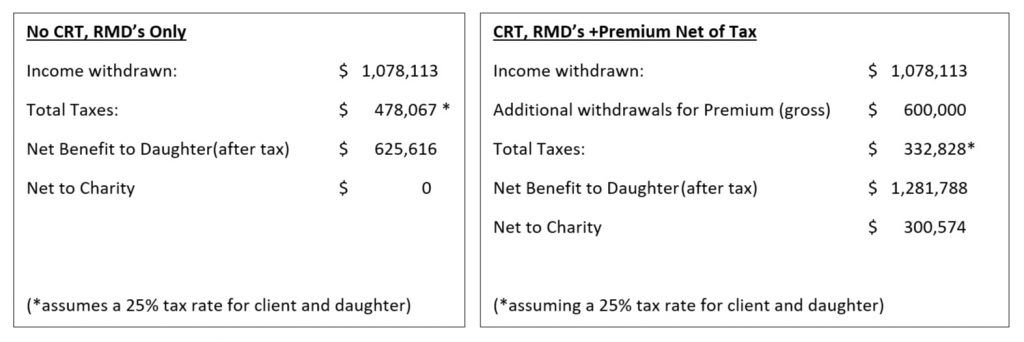

Weekly Market Update by Retirement Lifestyle Advocates

Stocks were
down slightly last week but finished the year much higher.
The Dow Jones Industrial Average
ended calendar year 2019 with a gain of 25.3%.
The Standard and Poor’s 500 bested the return of the Dow, concluding the
year with an annual return of 30.43%.
All-in-all, it was a good year for stocks. We remain convinced that most of stock’s gains in 2019 can be attributed to the easy money policies being pursued by the Federal Reserve.
If you’re an IRA or 401(k)
investor, 2020 brings sweeping changes on which you should get up to speed.
As 2019 drew to a close both the
House and Senate passed the SECURE Act.
The President signed it into law, and it is effective as of January
1. We will break this new law down in
more detail in our January client newsletter “The You May Not Know Report” but
will give you an overview in this week’s “Portfolio Watch” newsletter.
The SECURE Act allows required
minimum distributions to be postponed until you are 72. Prior to the passage of the SECURE Act,
required minimum distributions had to start at age 70 ½.
But, if you turn age 70 ½ after
December 31, 2019, you can now postpone your first distribution until age 72.
The SECURE Act also changes the
rules regarding IRA contributions. Now
as long as you are working, you can contribute to a traditional IRA regardless
of your age. Previously, you could not
contribute to a traditional IRA once you attained age 70 ½.
The SECURE Act also expands access to Multiple Employer Plans
(MEP’s). A MEP is a plan that allows
employers to band together and pool resources to give employees access to
retirement plans. The SECURE Act
incentivizes the establishment of these plans by smaller employers by offering
tax credits.
The SECURE Act also allows employers to auto-enroll employees in a plan at a savings rate of 6% of pay. Workers can opt-out at any time.
The SECURE Act also allows plans to add annuities as investment options in employer-sponsored retirement accounts. This is a big legislative victory for insurance companies that openly lobbied heavily for the bill.
529 plans were also revised under the SECURE Act. A 529 plan is a tax-advantaged plan that allows for educational savings. 529 plan assets can now be used to pay for registered apprenticeships, homeschooling, up to $10,000 of qualified student loan repayments (including for siblings) and private elementary, secondary or religious schools.
The student loan provision allows for student loans to be repaid for a
529 plan beneficiary up to $10,000. An
additional $10,000 can be used from the 529 plan to pay off student debt for
each of the 529 plan beneficiary’s siblings.
The SECURE Act would also allow investors to have early access to IRA
funds for any ‘qualified birth or adoption’ without paying the 10% early
withdrawal penalty. This change allows
each parent to take a penalty-free withdrawal of up to $5,000. The withdrawal will be taxable but would not
be subject to the 10% penalty.
But the SECURE Act is not all good news in our view. The new law eliminates the stretch-out IRA
that has been used as a cornerstone of estate planning for many IRA and 401(k)
owners.
A non-spouse beneficiary (often a child) of an IRA or 401(k) had the
ability to inherit the retirement plan and spread the taxes on the inherited
account over his or her lifetime prior to the passage of the SECURE Act. For example’s sake, a 50-year-old child
inheriting an IRA from a parent could take minimum distributions based on his
or her life expectancy, pay tax on the distribution but allow the remaining IRA balance to continue to
grow on a tax-deferred basis.
According to the IRS’ life expectancy table, a 50-year-old has a life
expectancy of another 34.2 years. That
means that prior to the SECURE Act becoming law, that 50-year-old would have to
take the inherited retirement account balance at the end of the year and divide
that total by 34.2 to determine the required distribution from the inherited
IRA.
The next year, the IRA beneficiary would adjust the divisor by subtracting 1 from it. In this example, the 34.2 would be adjusted to 33.2 (34.2 – 1 = 33.2). The prior year-end balance would be divided by 33.2 to get the new required distribution for the current year.
In this way, should the beneficiary elect, the inherited IRA could be
maintained for their life expectancy. In
this example, to age 84.
That stretch out option is no longer available under the new law. The SECURE Act mandates that inherited IRA’s,
401(k)’s and Roth IRA’s be totally distributed within 10 years of inheriting
them.
The SECURE Act makes leaving an heir
money in a retirement account far less desirable. And, it makes Roth conversions that much more
attractive for some IRA owners, especially those who plan to pass most of their
retirement savings on to a non-spouse beneficiary.
Alternatively, there is another
strategy that may make sense for some IRA owners to consider. One way to potentially establish a
stretch-out like outcome under the new rules would be to establish a Charitable
Remainder Trust that would be the beneficiary of the IRA or 401(k)
account. The income beneficiary of the
Charitable Remainder Trust would be the IRA beneficiary, typically a child.
Since
distributions from a Charitable Remainder Trust are calculated based on the
life expectancy of the beneficiary, the equivalent of a stretch out may be able
to be established. This strategy could
be combined with a life insurance trust to replace the portion of the IRA going
to charity.
Here is a
hypothetical example to make the possible outcome clearer:
A 72-year-old female has $1,000,000 in her
IRA. She plans on taking only required
minimum distributions and leaving her IRA balance to her only daughter at her
death. Her daughter is presently 47
years old.
Currently, her required minimum distribution
will be just under $40,000 and then increases from this point on. Assuming a 5% growth rate and taking only required
minimum distributions, at her death (assuming death at age 90), her IRA balance
will be about $834,000. Under the new
law, her daughter will have to distribute and pay taxes on the entire IRA
balance within 10 years. (Note: If returns other than 5% are realized, the
outcome illustrated here could be significantly different.)
What if this 72-year old client decided to
establish a charitable remainder trust and name her daughter the income
beneficiary?
The daughter, in this hypothetical example
would be 65 years of age. Assuming the
charitable remainder trust was established with a 5% payout to the daughter and
the assets continued to earn 5% annually, the daughter would receive income of
$41,700 annually for as long as she lived.
At her passing, a charity would receive the $834,000 in the trust.
There is no tax on the IRA transfer to the
charitable trust on the death of the original IRA owner and no tax on the
ultimate distribution to charity. Only
the distributions to the daughter of $41,700 per year would be taxable.
The original 72-year old client could opt to
combine this strategy with a life insurance trust in which she purchases a life
insurance policy on her life in the amount of $1,000,000. The annual premium is $25,000. She pays this using her IRA assets. This strategy will reduce the ultimate
benefit to charity but increase the net benefit to her daughter.
Let’s
compare potential outcomes:

Nice outcome isn’t it. The client takes the same income. Daughter gets a net benefit of nearly double. And a charity wins that wouldn’t have otherwise received anything. It’s important to note that the IRA balance at the client’s death is lower using the CRT because the IRA is funding life insurance premiums. If you’re likely leaving retirement account assets to children, you might want to take a look at this Salvage Your StretchTM strategy.
This
week’s RLA Radio program features Lawrence Reed. That show is now available at www.RetirementLifestyleAdvocates.com.
“When I started counting my blessings, my
whole life turned around.”
-Willie
Nelson


